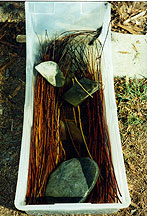

Pl Biosyst 142:572–583īaselga A, (2010) Partitioning the turnover and nestedness components of beta diversity. Chapman & Hall, London, pp 115–146īartha S, Merolli A, Campetella G, Canullo R (2008) Changes of vascular plant diversity along a chronosequence of beech coppice stands, Central Apennines, Italy. In Buckley GP (ed) Ecology and management of coppice woodlands. Appl Veg Sci 12:187–197īarkham JP (1992) The effect of coppicing and neglect on the performance of the perennial ground flora. Oecologia 96:373–382īaeten L, Bauwens B, De Schrijver A, De Keersmaeker L, Van Calster H, Vandekerkhove K, Roelandt B, Beeckman H, Verheyen K (2009) Herb layer changes (1954–2000) related to the conversion of coppice-with-standards forest and soil acidification. Ecol Letters 9:683–693Ītmar W, Patterson BD (1993) The measure of order and disorder in the distribution of species in fragmented habitat. Protezione Civile Marche, Osservatorio Geofisico Sperimentale MacerataĪnderson MJ, Ellingsen KE, McArdle BH (2006) Multivariate dispersion as a measure of beta diversity.

Oikos 117:1227–1239Īlmeida-Neto M, Frensel DML, Ulrich W (2012) Rethinking the relationship between nestedness and beta diversity: a comment on Baselga (2010) Global Ecol Biogeogr 21:772–777Īmici M, Spina R (2002) Campo medio della precipitazione annuale e stagionale sulle Marche per il periodo 1950–2000. We conclude with management indications, highlighting the importance of maintaining the traditional local approach (coppicing with standards in small 0.5–1.0 ha sized management units with a ca 30-year rotation cycle) where active coppice parcels are interspersed by abandoned stands.Īlmeida-Neto M, Guimaraes P, Guimaraes PR Jr, Loyola RD, Ulrich W (2008) A consistent metric for nestedness analysis in ecological systems: reconciling concept and measurement.

Our results suggest an overall landscape-scale stability (and sustainability) of this coppice forest system. Only in the early stage of forest regeneration after coppicing, species compositional changes are reflected by functional changes with surviving understorey species having clonal regeneration traits.

However, the rate of species turnover and species impoverishment do not significantly differ among the three age classes, indicating their constant importance along the forest regeneration after disturbance. Significant temporal nestedness was found in each stage of succession. In contrast to our expectation, declining species richness appeared only in the recovering stands, while the landscape scale (between-stand) heterogeneity, except for post-logged and recovering stands in 2011, did not change over five years. post-logged, recovering and old coppice stands (0–16, 17–31 and > 32 years, respectively). from 2006 to 2011) in three age classes, i.e. For this purpose, we resampled a chronosequence of complex coppice beech forests of the Central Apennines (Italy) monitoring the short-time species dynamics of five years (i.e. In this context, it is interesting to evaluate the species compositional changes, including the processes of species turnover and species impoverishment (nestedness) and to investigate the role of plant functional traits. While studies on long-term changes are available, the short-term dynamics of the coppice forest understorey has not yet been explored. New insights in the ecological processes that regulate plant diversity are relevant for a sustainable forest management. After decades of decline of this practice, socio-economic changes might induce a revival valuing the biomass as a resource. The silvicultural management of coppicing has been very common in deciduous forests in many European countries.


 0 kommentar(er)
0 kommentar(er)
